Ultra | Homer | Interview | “Grown In U.S.A.”
Born from the alchemical cauldron of ’60s Texas garage mischief—courtesy of The Outcasts and The Stoics—Homer emerged as a psychedelic phoenix soaring into rock’s kaleidoscopic renaissance.
Their singular offering, ‘Grown In U.S.A.’ is an enigmatic private press treasure that pirouettes between dusty backroad psych and the embryonic stirrings of prog, with guitars so vivid they practically narrate the story themselves. Mellotrons pop in like eccentric guests at a cosmic hoedown, while vocals gently nudge you toward nirvana. This rare Texas trinket is now reborn with remastered sound, a tough-as-boots cardboard sleeve, and an obi to make it extra posh. An insert stuffed with tales and snapshots adds to the lore. Or, as Patrick Lundborg of Acid Archives so aptly put it, “A Texas private press classic that spans several early ’70s genres but still manages to sound like a coherent, personal work…”
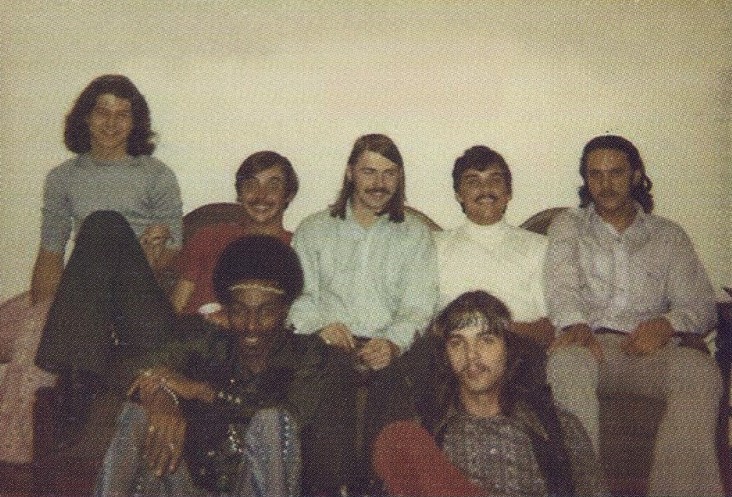
“I’d forgotten how truly LOUD we played… No 18-watt amps balanced on little-bitty chairs for us!”
Where did you grow up and what were some of your influences back then?
Scott: We’re all native Texans. Being from Texas, music is everywhere. In San Antonio and Austin, on any given night, you can listen to tons of rock, country & western, blues, Tejano, classical—you name it. You can’t help but be influenced and bombarded with every type of music known to man in Texas!
Tom: I grew up in San Antonio… some of my early rock influences were Wishbone Ash, The James Gang, and Humble Pie.
Larry: I grew up in San Antonio as well. My early influences were Grand Funk Railroad, Montrose, Blues Image, and Mountain/Leslie West.
Galen: San Antonio here, too. Biggest influences were Jeff Beck, Ritchie Blackmore, and Michael Schenker – as well as some smoking local pickers like Rod Prince, Chris Holzhaus, Chris Geppert, and Howard Gloor.
Don: I was born in Ohio and lived there from 1949 to 1959. My first musical influence was my father, Don H. Evans, and my grandfather, Robert D. Metcalf. My father was a jazz musician (playing stand-up bass), and that’s the kind of music I heard around the house. At my grandfather’s bar, The Gallow Tavern, he had a jukebox with all the greatest Black pop and early rock, as well as Elvis, Jerry Lee Lewis, Roy Orbison, etc. It was there that I really got educated.
When I moved to Arizona in 1969, I listened to rock and roll exclusively. Around 1962 I got into The Beach Boys, but when The Beatles exploded on the scene, I listened to all the bands doing the “Mersey Beat.” After a while, we were hoping American music would come back with an answer to Beatlemania, and finally, it happened with the Turtles, Sir Douglas Quintet, The Byrds, and Bob Dylan. Even Phoenix radio (what we listened to in my hometown of Gila Bend) gave us Phil and The Frantics, Kaleidoscope, and Alice Cooper.
What was the scene in your town?
Scott: There were lots of great bands and great musicians in San Antonio at the time and to this day. Ultra was one of the few bands at the time that played only original music.
Tom: San Antonio was diverse musically. Growing up, it was not unusual to play a rock gig on Friday, then go see a country-western band on Saturday. We would go see George Strait play in a small club called “The Shadows” or see Willie Nelson at Floore’s Country Store. Both were local acts then and not known nationally.
Larry: In one night, one could see a rock band, a country band, a blues band, and a Tejano/Mexican band. All you had to do was drive around. There were actually great venues to play in. When disco hit, the live music venues all but died out.
Galen: In the ’70s, San Antonio and Detroit were, in reality, the two hard-rock capitals of the USA. Many well-known bands from that era first “broke” nationally in San Antonio: Triumph, Rush, Moxy, Legs Diamond, Budgie – and even Judas Priest all got their first taste of nationwide success in San Antonio. This was due in large part to the constant airplay they received from radio stations in San Antonio and to the local DJs who pushed those acts hard.
Don: There wasn’t really any musical scene for me in Arizona until high school when I played in some hometown rock bands: The Exotics and The Contacts. In both bands, we played Beatles, Stones, Byrds, etc. I played drums in both bands and didn’t start singing until I went to college in San Antonio, TX, in 1967.
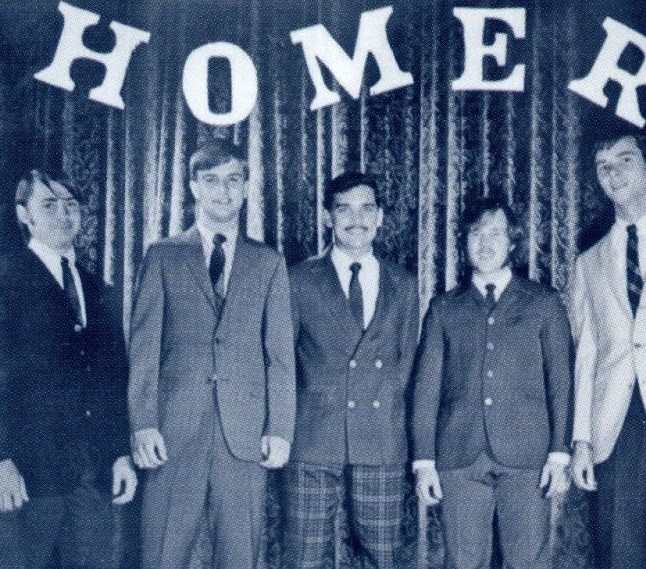
Were you guys in any other bands before forming Ultra? Any releases from then? I know that Galen Niles was in Homer and before that in The Outcasts.
Scott: Yeah, Tom and I played in bands together all through high school. Typically, if you got Tom as a drummer, you got me as a bass player. While in high school, our band was Iron Rock, and while we were attending the University of Texas, we played in a band called Jury. Larry McGuffin played in a band by the name of Emerald. Our vocalist, Don Evans, also played drums and sang in Homer and The Water Brothers.
Larry: I was in a few bands prior to Ultra that went by the names Eastern Fleet, Magic, and Maxine Gas. Later on, there were Overload and Emerald. There were no releases from any of those bands.
Don: I started my first attempts at singing in Arizona during my senior year. I bought a record in Phoenix called The Paul Butterfield Blues Band, and Paul Butterfield became my mentor in the blues.
When I moved to San Antonio, I hooked up with some neighborhood musicians led by Joe Estes, and we formed The Sugar Bears Blues Band. We played at air base teen clubs doing the blues – Butterfield, Little Walter, Howlin’ Wolf, and Jimmy Reed. In this band, I applied vocally what I had learned from Butterfield. We played for almost two years or so and then broke up.
In 1968, I joined The Water Brothers, a psychedelic band made up of John Rogers (guitar), Rickey Kopff (bass), Bucky Payne (drums), and myself on vocals. The music we played was composed of blues (Butterfield, Cream, etc.) as well as original music. We played in San Antonio at the Pusi-Kat and at The Vulcan Gas Company in Austin, where we opened for Poco, New Riders of the Purple Sage, Johnny Winter, Velvet Underground, and Freddie King. We also played on a local music show called Swingtime. We eventually disbanded in 1971.
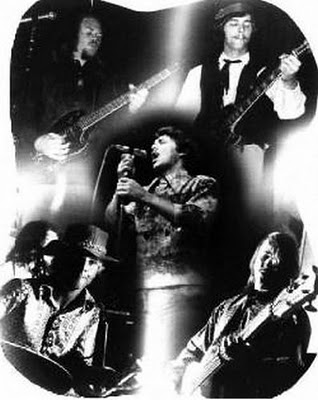
Now I would like to talk first about Homer and then about Ultra. So, Galen, tell me, how did you get together with the other guys and form Homer?
Galen: Chet Himes and I formed Homer while we were in college—we lived in the same apartment complex and just decided to get together one day. We were basically just a bunch of college guys who wanted to play and “party-hardy.” The name “Homer” really means nothing. We just thought it sounded kind of funny—in a “Homer & Jethro” kind of way—so we went with that name… God knows why!
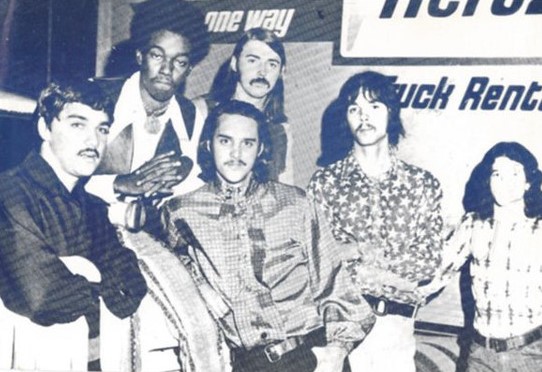
You recorded three 45 singles, and you almost signed with Columbia Records, right? Would you like to share the story about it?
Galen: The first single was “I Never Cared for You”, which we recorded at Robin “Hood” Brian’s studio in Tyler, Texas. That studio was hot at the time, as ZZ Top recorded their first three albums there. My parents loaned us the money to record it, and amazingly enough, it sold very well. A couple of DJs there got behind it, and that helped a lot.
After we’d sold about 5,000 units or so, and the record was charting regionally, we signed with a management company. That company took over all the accounting duties and paid all the bills, so we’re not sure exactly how many units were ultimately sold of that single. The management company did the Columbia deal, and none of us in the band were privy to the details. (Two lawyers headed up that management company.)
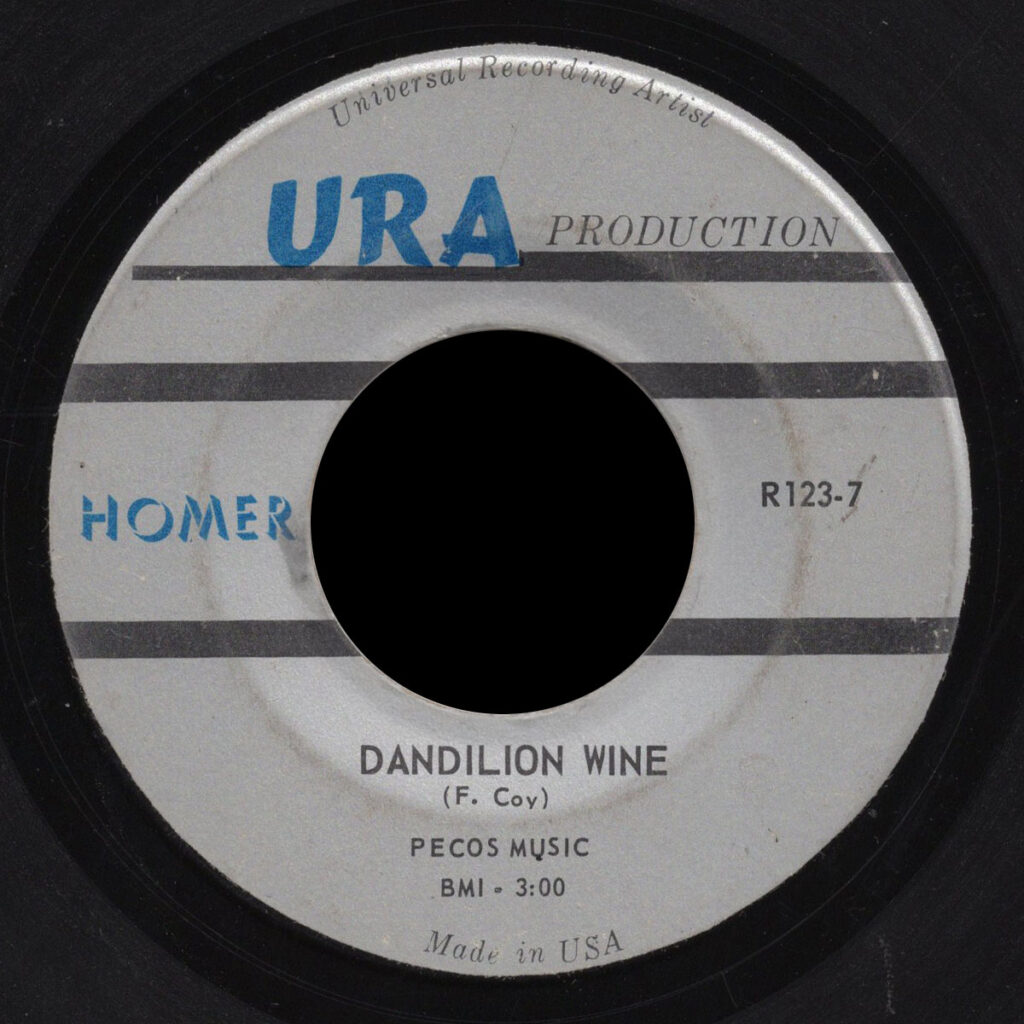
What we were told, however, was that Columbia wanted to release the single nationally, and that we were going to receive a $5,000 bonus check from them. BUT—the head A&R man at Columbia balked before the final agreement was signed, as he wanted to hear some more Homer material before he cut that check. Well, we had nothing recorded, so the management company sent us back to Robin Hood Brian’s studio, and we recorded two more songs: “On the Wall” b/w “Texas Lights”, and sent those off to Columbia Records. In the interim, momentum had been lost, and as “I Never Cared for You” began to slowly slip in chart position, Columbia simply killed the deal.
Our management company then went on to release “On the Wall” anyway, but it failed to chart. They didn’t give up after “On the Wall” tanked, and they sent us down to Walt Andrus’ studio in Houston, where we recorded our next single: “Sunrise”. But it, too, failed to climb the charts. Shortly after that, our arrangement with that management company simply went on to expire with no further single releases.
In 1970, you released Grown in U.S.A.. Where did you record it, and what are some of your strongest memories from producing and recording this LP?
Galen: That was actually recorded and released in 1972. Some of it was recorded in Houston at Soundville and at Walt Andrus’ studio there, and some of it was recorded at Odyssey Sound in Austin. But the bulk of it was recorded at Chet Himes/Chris Geppert’s Ampex 8-track studio.
Chet was the bass player in Homer, and he and Chris had started a small studio in the back of Chet’s house in San Antonio. We were able to take our time recording there, and a few of our friends—such as the guys from Christopher Cross—helped us and contributed their talents to that record. The sum total of time that it took from start to finish to get the record done was about a year. (Chet Himes is today a successful Grammy-nominated recording engineer in Austin, and just a few of the acts he’s recorded through the years are Ted Nugent, Carole King, and Christopher Cross.)
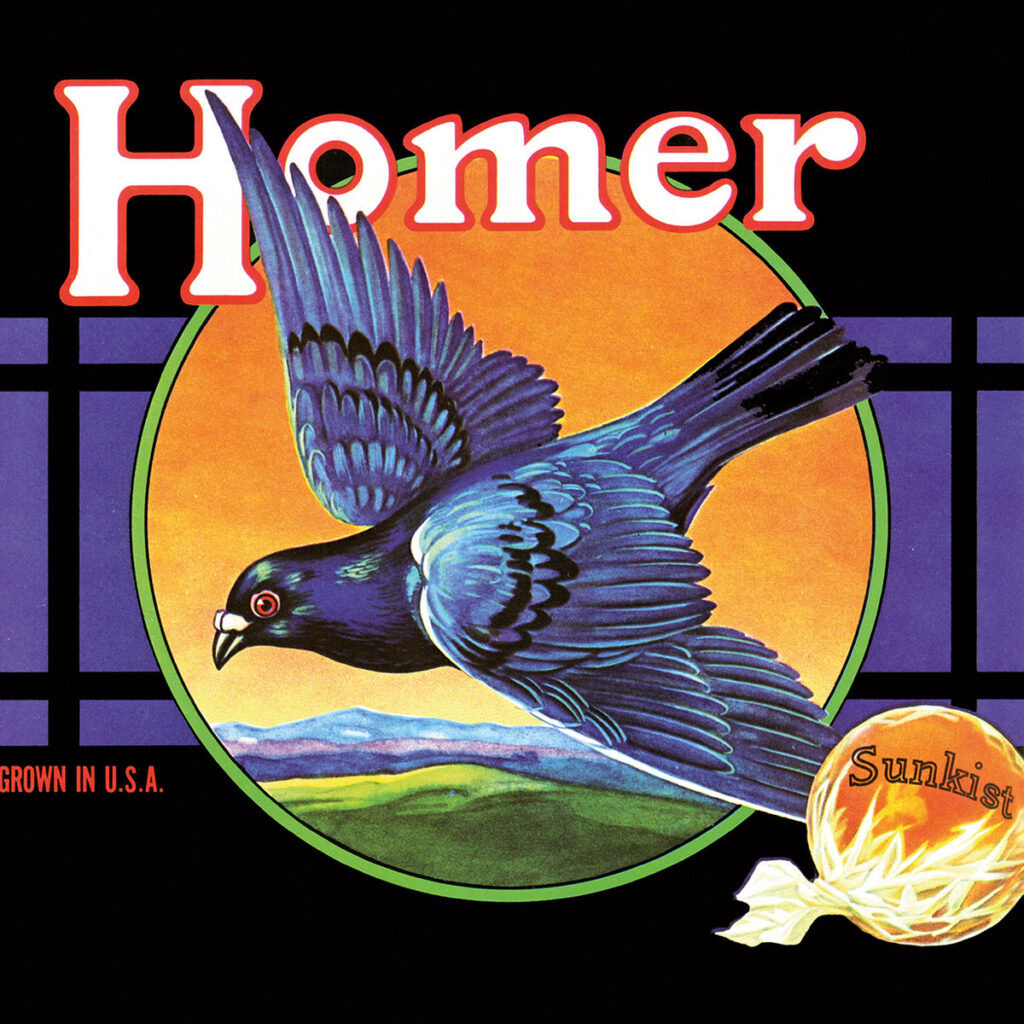
How many copies were made, and what can you say about the cover artwork?
Galen: Initially, only 1,000 LPs were pressed, and those were distributed regionally by a Houston company, Budget Tapes and Records, which was essentially a chain of record stores. The cover artwork was from the side of an old orange crate. (We got permission to use it from a national fruit distribution company.)
Was this a private release? How many copies were actually made?
Galen: Initially, there were some private investors involved. We had sold those investors on the idea that we would lease that record to a major label, at which time they would “cash in.” It turned out that neither the original investors nor the band made much profit from that business venture, however.
(Don’t laugh at that “business venture” idea—ZZ Top did exactly that with their first album, too. They were just obviously a lot more successful at it than we were!)
Eventually, the LP was re-released on the Breeder record label and later on the Akarma record label, but I can’t really say what the total number of copies made and sold was—I really have no idea. It was a heck of a lot more than the original 1,000, though! Also—unfortunately—no royalty checks have ever come in the mail.
Don Evans and Van Wilks were eventually added to the band, and we recorded a few other songs at Odyssey Sound Studios in Austin, but they were never released. (Come to think of it, one of those songs did make it on the Ultra CD: “Android”.)
What led to the formation of Ultra?
Scott: If I recall, Larry got in touch with Niles one day and wanted to see if he might be interested in doing original music together. Needless to say, they were going to need a bass player and a drummer. Given our first time together with Niles and McGuffin, it was obvious that this was going to be a very cool “in-your-face guitar band.” Tom and I were a good fit simply because both of us had played as a rhythm section together for years. We realized that our jobs were going to be holding down the rhythm and bottom end while these guys ripped it up! Once we knew it was going to click, Niles got in touch with Don to handle the vocals.
Larry: Actually, I was a student of Galen’s at the time. He was teaching at Dellview Music. To me, Galen had too much talent not to be playing. I finally got up enough nerve to ask him if he wanted to play again and play all original music. The rest is history… so to speak. Scott and Tom (Budda) are really a great team. They have been playing together for so long, they think alike. They lay a really solid foundation, and without a solid foundation… well, there’s nothing to build on. In other words—why bother?
Don: Next, I played with Galen Niles in Homer and eventually formed Ultra in 1975. Joseph Pugliese, who was with Stone City Attractions at the time, put us on as an opening act for Be Bop Deluxe, Pat Travers, and Legs Diamond, just to name a few. Eventually, we broke up. For my part in that, I was doing too much at the time. I was getting a master’s degree at UTSA in art and curating shows for The San Antonio Museum of Modern Art (of which I was a founder along with Norman Avila and George Horner). After Ultra, I did another 13 years (as drummer) for the original Los Number 2 Dinners. Today I play in an art/music group called El Even with Norman Avila and James Borrego. You can see El Even as well as Ultra on YouTube. Check it out?
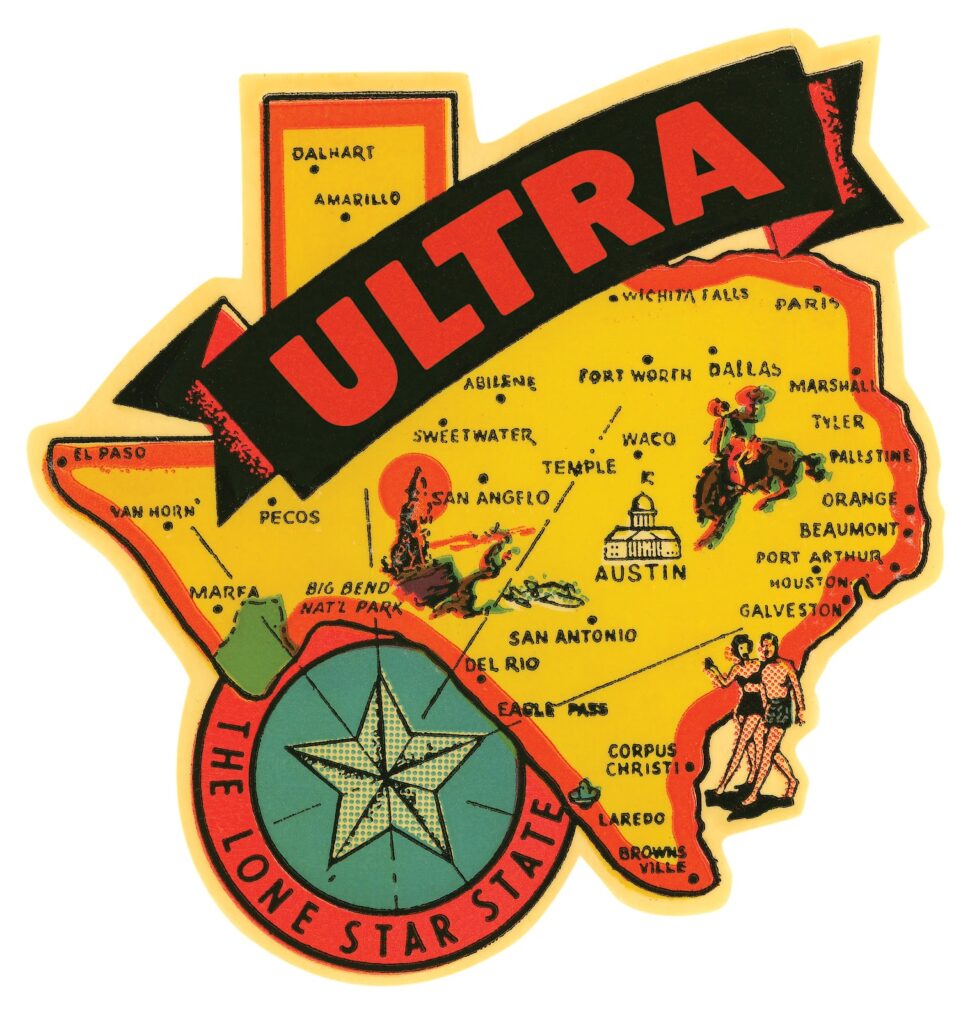
What year did you record the whole LP and release 100 demo copies? I want to talk more about these recording sessions you had… What are some of the strongest memories, and where did you record it? Why was it never officially released?
Scott: At that point, it was my first time in the studio. This was back in the day of the huge 16-track Ampex tape machines and tube-type outboard equipment. In the ’70s, this was state-of-the-art stuff! All of the recordings were done by Bob Bruce at United Audio Recording (UAR) studio.
Tom: Recording was fun… It was definitely a different process back then. Years later, I ended up running a record label at Universal and saw first-hand how the technology had evolved, as well as experiencing how the industry had changed focus.
Larry: I believe that may have been in 1976 or 1977. Like Scott said, we recorded it at a studio called United Audio Recording. Robert (Bob) Bruce was the owner and engineer. My most vivid memory is that before we went in to record the song 10 Years Since, Galen had a few words of wisdom for this harmony guitar part in the intro—“Listen, you have one chance to get it right, or I’m doing it. We’re paying for this, and we don’t want to run up a huge bill waiting on you to get it right.” LOL! I got it right the first time! Also, what we gave in the amps with volume, Bob Bruce took away. LOL! There was a lot of compression. It was all good. All of the studios prior to that were all 4-tracks, not really professional like United Audio Recording.
Don: The lyrics I sang in the Ultra recordings came from a notebook I carried with me at the time, which had the title Wings Thru Sorrow on its cover. I don’t remember too much about the recording sessions at that time because I was going through a psychological crisis at that moment, which is perhaps best expressed by the lyrics I wrote to Compass. I can remember that, for a few of the songs, I wrote lyrics at the studio.
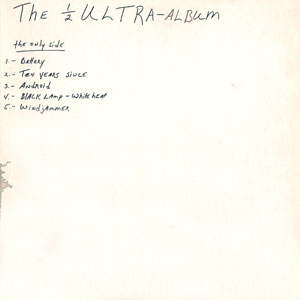
What gear did you guys use?
Scott: Vintage Marshall guitar amps and vintage Sunn Bass amps—lots of them. We still do. To this day, when Ultra takes the stage, it gets really loud, really quick. Thank you, Jim Marshall and Conrad Sundholm! LOL!
Tom: As far as drums go, I started with a double-bass Rogers set and then got a great Ludwig set that I absolutely loved.
Larry: Like Scott said, vintage Marshall amps, Sunn Bass amps, and lots of guitars. Some of them were a 2nd edition Gibson Flying V, a Gibson Explorer, a white Gibson SG/Les Paul (Scott, correct me if the SG/Les Paul is incorrect), and a Hamer, just to name a few. When we played, we usually had more equipment than the headliner. That was true then and still is today. Galen built this rolling guitar rack that held up to 10 or 12 guitars, and Scott had at least 4 to 6 Gibson Thunderbird basses on his side of the stage. It was really impressive.
Galen: I started out playing through Ampeg V-4 stacks but soon switched over to Marshalls. Those old non-master volume Marshalls were unbeatable for hard rock.
Don: As far as the gear I used—well, I’m pretty inept when it comes to that. I couldn’t even tell you.
Did you do any shows? Perhaps any touring?
Scott: About 95% of our gigs were concert venues. We played very few clubs. We did shows with Moxy, Legs Diamond, Pat Travers, Blackfoot, Be-Bop Deluxe, Alvin Lee, and many others. Probably one of the most famous shows we played was opening for the Sex Pistols at their legendary Randy’s Rodeo gig in San Antonio. That concert was ground zero for the entire U.S. punk movement back in 1976. What a trip that was! The audience was made up of Rockers, Punks, and Texas Cowboys—a lethal combination, to say the least! LOL!
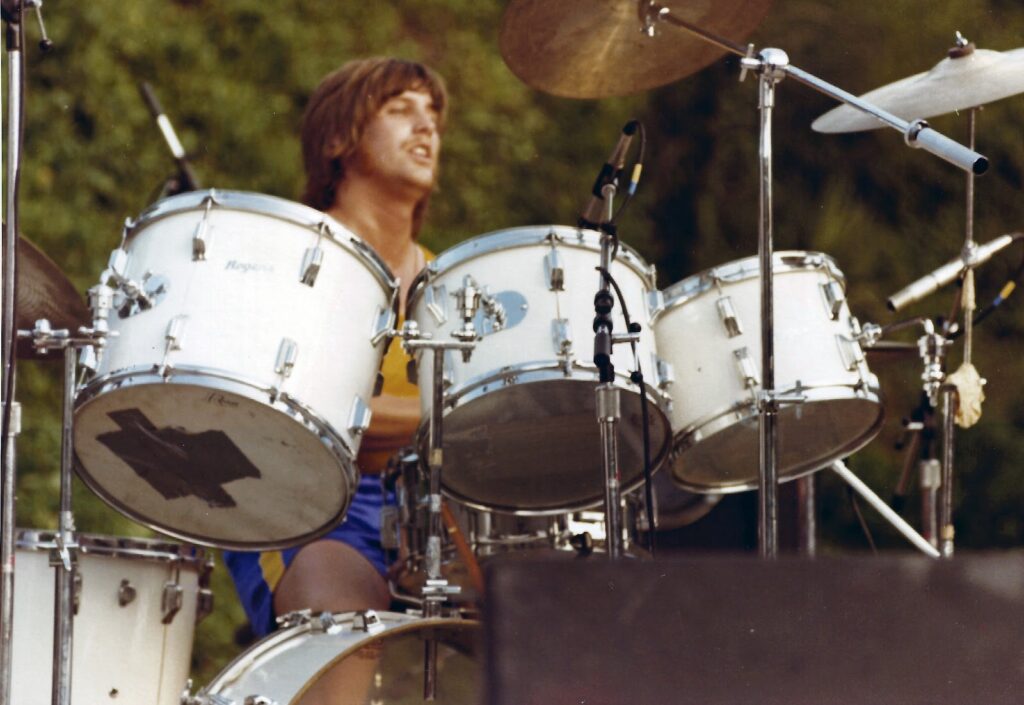
Larry: Scott pretty much summed it up accurately. However, I’d like to add a quick footnote: all of the concerts we played were produced by longtime promoter Jack Orbin, president and executive producer of Stone City Attractions here in San Antonio. Jack started Stone City Attractions in 1972 and, to this day, remains an influential independent promoter.
Don: The other guys covered most of it, but one of my favorite gigs was an open-air concert we played somewhere in the Hill Country outside San Antonio. The audience was really receptive to what we were doing on stage.
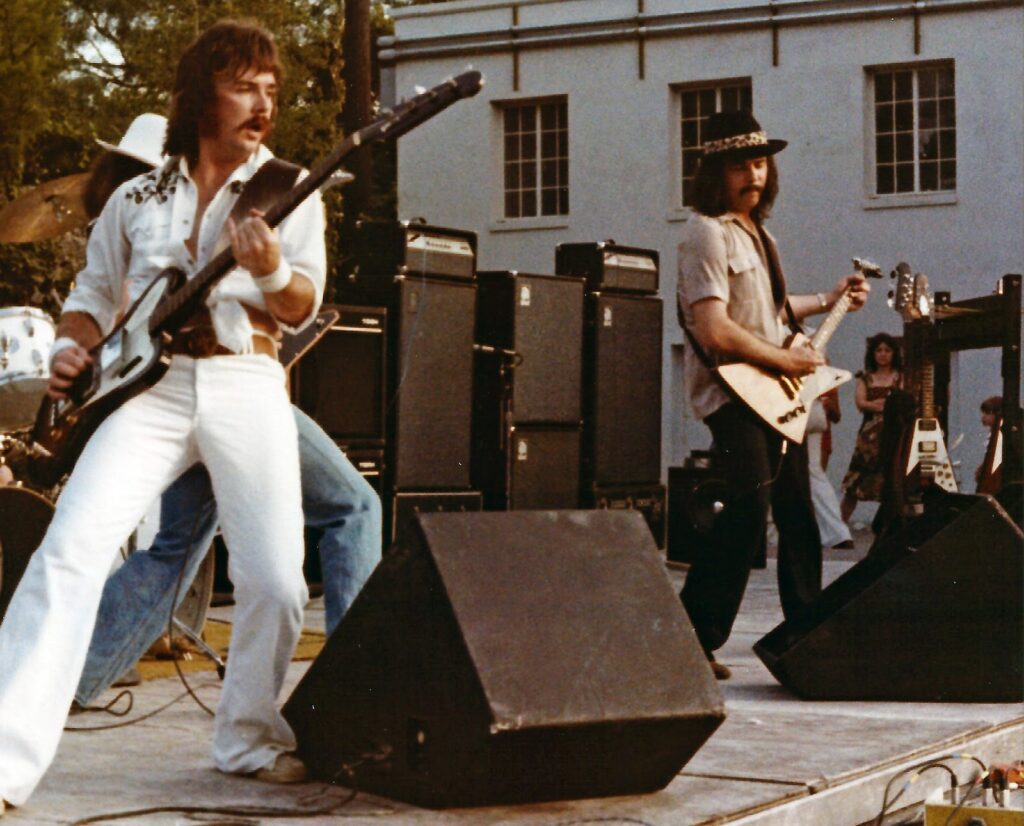
Would you like to talk about your songwriting?
Scott: As you know, Niles and McGuffin are superb and amazing guitar players. Typically, they’d come up with the basic direction and melody. Tom and I would then lay down the rhythm foundation. Meanwhile, Don would put together the vocals.
Larry: It was a team effort, and it all just clicked.
Don: When we put these songs together, I didn’t think too much about them at the time. Don’t get me wrong—I was proud of what we did. But it took revisiting them later to really appreciate our accomplishments. Listening now, I’m amazed at how good it was. Niles and McGuffin’s guitar work was incredible—way ahead of its time. Their work on one song even reminds me of the dual guitars on Hotel California by the Eagles, except our guys did it years before. Scott’s bass was inventive and solid, and Bubba’s drums were amazing. Honestly, I didn’t fully hear what they were doing until I revisited the recordings with “new ears” much later. As for my lyrics and vocals, I was pleasantly surprised—they were better than I thought. That said, I’ve always had a hard time listening to my own vocals. I don’t know why. Can any other vocalists out there relate?
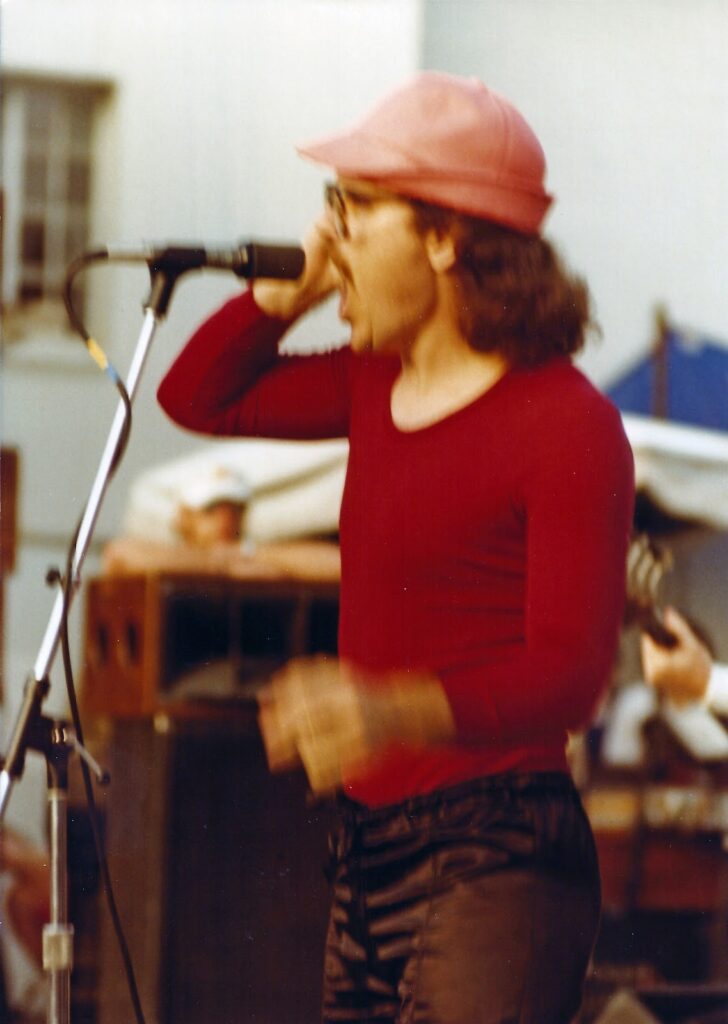
What happened next in the ’80s and ’90s?
Scott: Disco—and yes, it still sucks out loud! By the end of the ’70s, the writing was on the wall (at least temporarily). We were never going to give in to the disco crap, so we just took a long sabbatical.
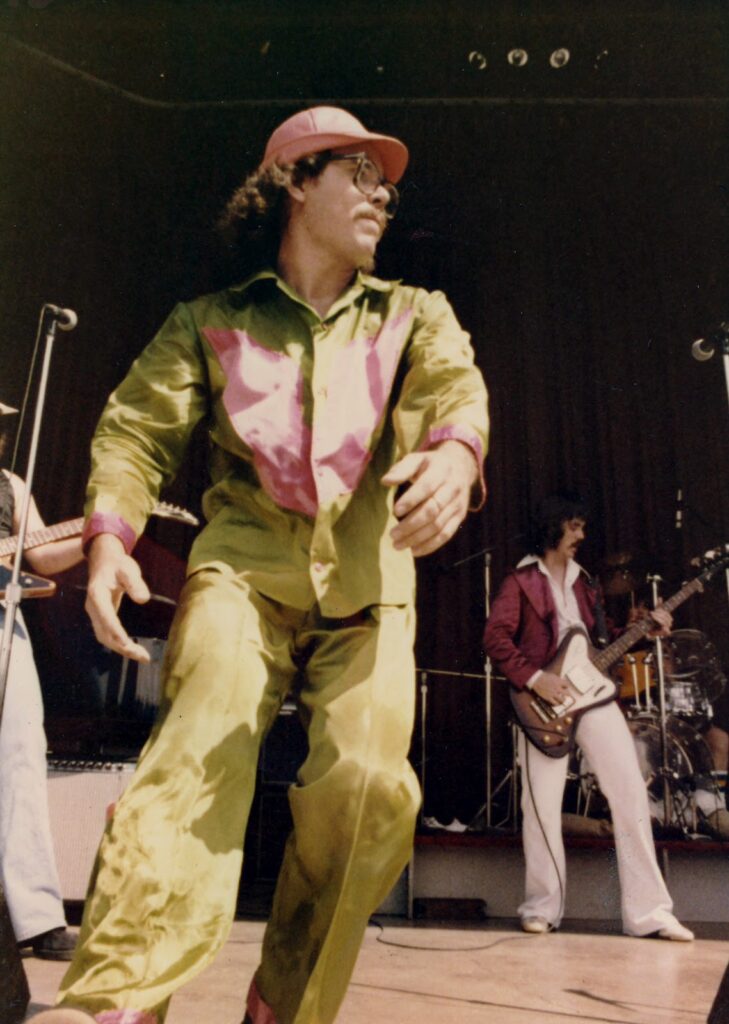
Larry: What can I say? DISCO SUCKS! After that, I went on to form Emerald.
Don: The ’80s and ’90s for me musically meant playing with Los No. 2 Dinners, a band that sang songs about San Antonio from 1979 to 1992. From 1983 to 1988, I played with Joe Pugliese and Norman Avila in the art band Batteries Not Included. Then, in 1988, we formed El Even (with Avila and Borrego), which is still active today (as of 2012).
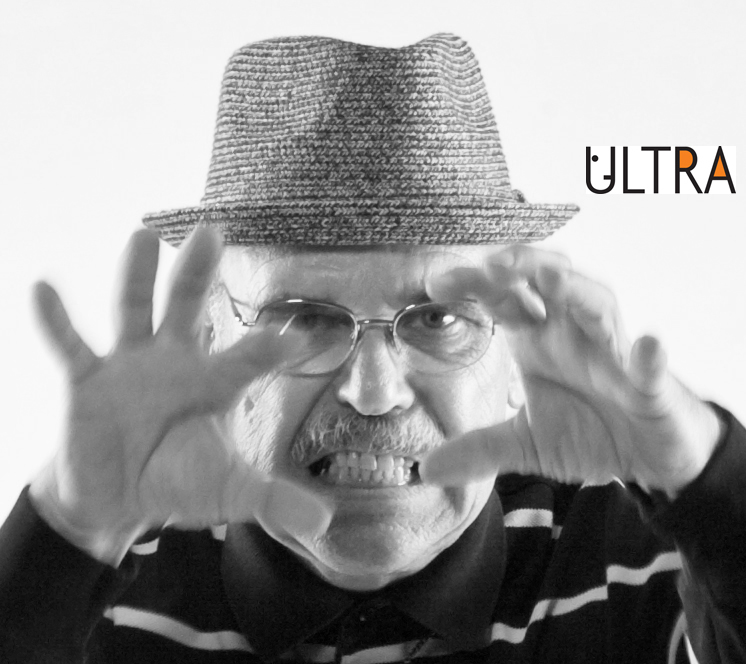
In 2000, Monster Records released your material, and it’s still in print on Rockadrome. Are you satisfied with it?
Scott: I think they did a great job with it. Naturally, there’s always something you wish you could change, but all in all, it’s still a great and very unique album.
Larry: I agree.
Don: It was a very welcome moment. It finally seemed like we might be appreciated for what we did way back then.
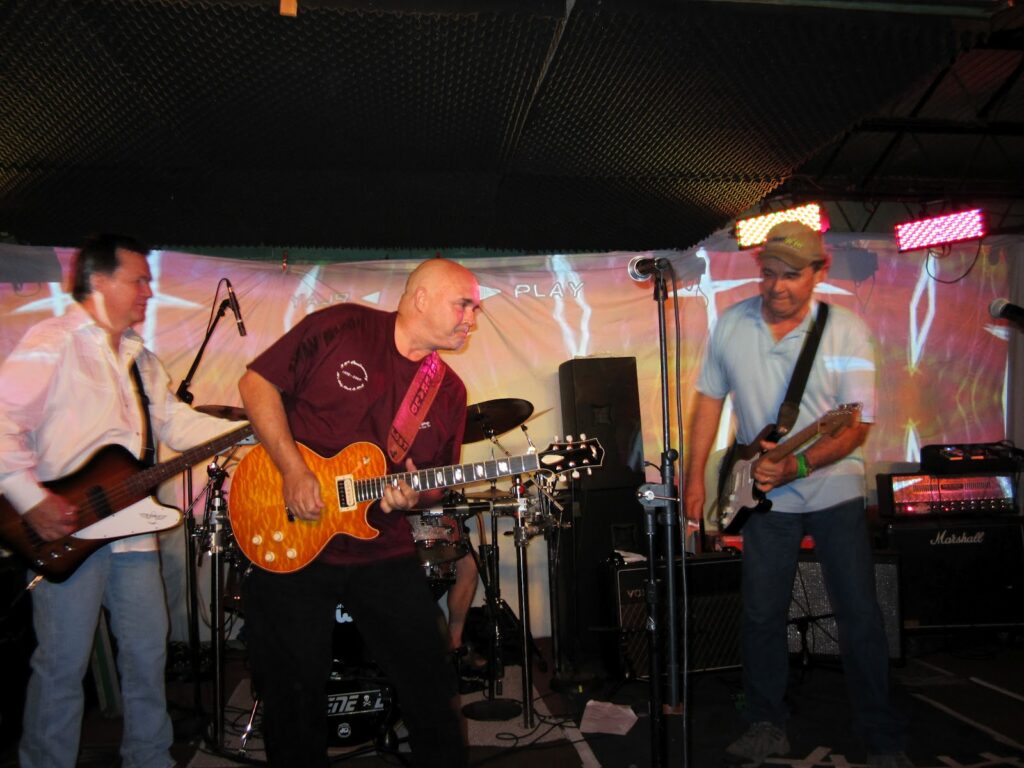
You had a reunion not so long ago. How was it to play live again?
Scott: What a rush! When we got up on stage, nobody in the band was sure what kind of response we’d get. After the first few notes, it became clear that not only did we still have it—we were better than ever! The crowd was really into it, and we fed off that energy. In a word, we “nailed” it! On top of that, we were also inducted into the Texas Music Legacy Hall of Fame. That was quite an honor for us.
Tom: Playing live at the reunion show was incredible. It was definitely an adrenaline rush. There’s nothing quite like feeding off the energy from the crowd when you’re doing it live.
Galen: I’d forgotten how truly LOUD we played… No 18-watt amps balanced on little-bitty chairs for us!
Larry: It was WONDERFUL! Scott and I started working on the tunes, and then Tom (Bubba) moved back from Los Angeles. When we finally all rehearsed together, I could tell something good was about to happen. The energy from the audience was great, but the energy on stage between all the guys was absolutely overwhelming. It was like we never stopped—and hopefully never will!
Don: The reunion was tremendous—that’s all I can say. It was great playing with the guys again. It’s definitely one of the highlights of my life.
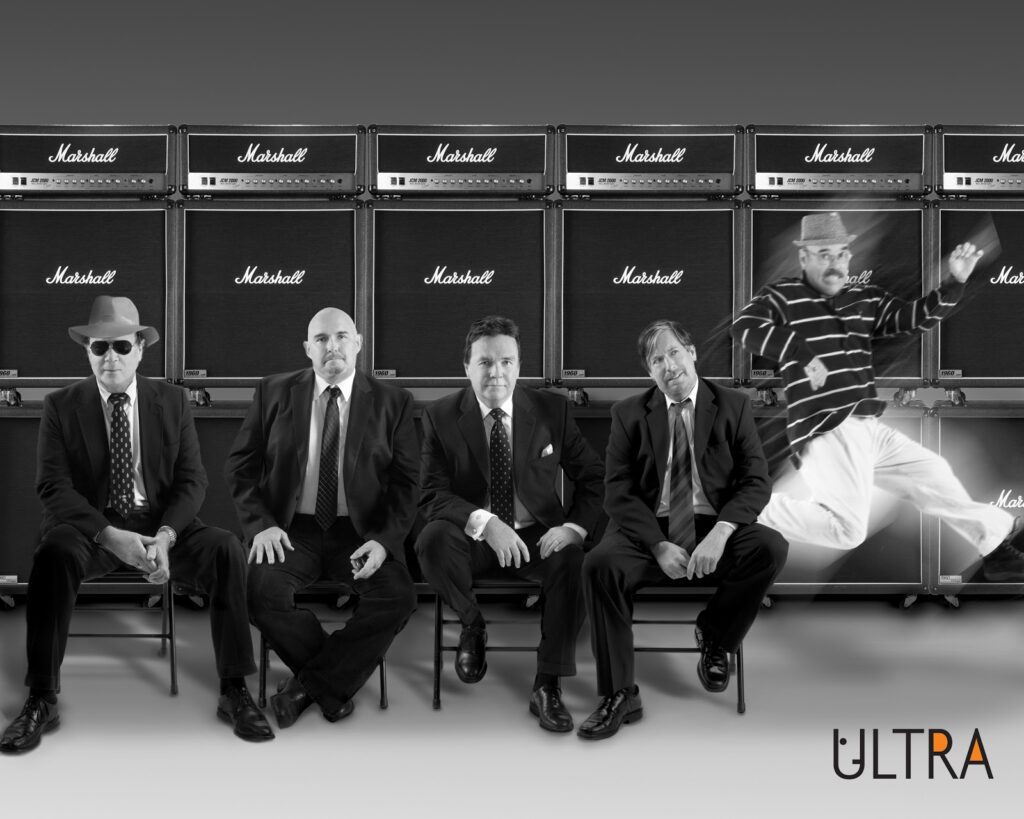
Thank you so much, guys! Would you like to share anything else with your fans and the readers of It’s Psychedelic Baby Magazine?
Scott: Based on the “over-the-top” positive reviews from our fans and blogs, we’ve decided to start playing again. Since so many of our CD and online sales have come from overseas, we’re really interested in touring Europe, Asia, and other countries in the near future. Oh… and thanks for listening to our music!
Larry: Thank you for this opportunity and for listening to our music. The only other thing I’d say is, “Give me some juice, Bruce, and turn me loose!”
Galen: Yes—thank you to It’s Psychedelic Baby Magazine. It’s an honor to be remembered for anything after all this time!
Don: Making music is one thing, but it’s not complete without a listener. On behalf of rock and roll, I want to thank all of you out there who listen. Thank you for your support.
Klemen Breznikar
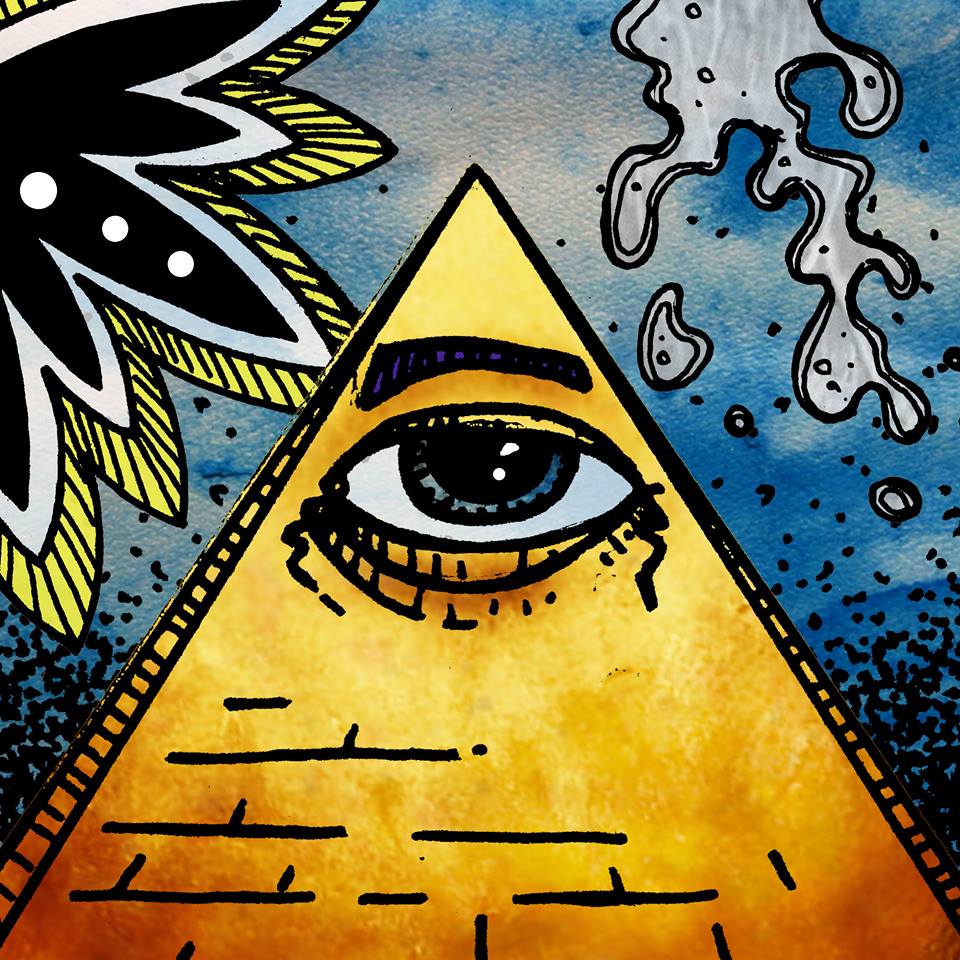
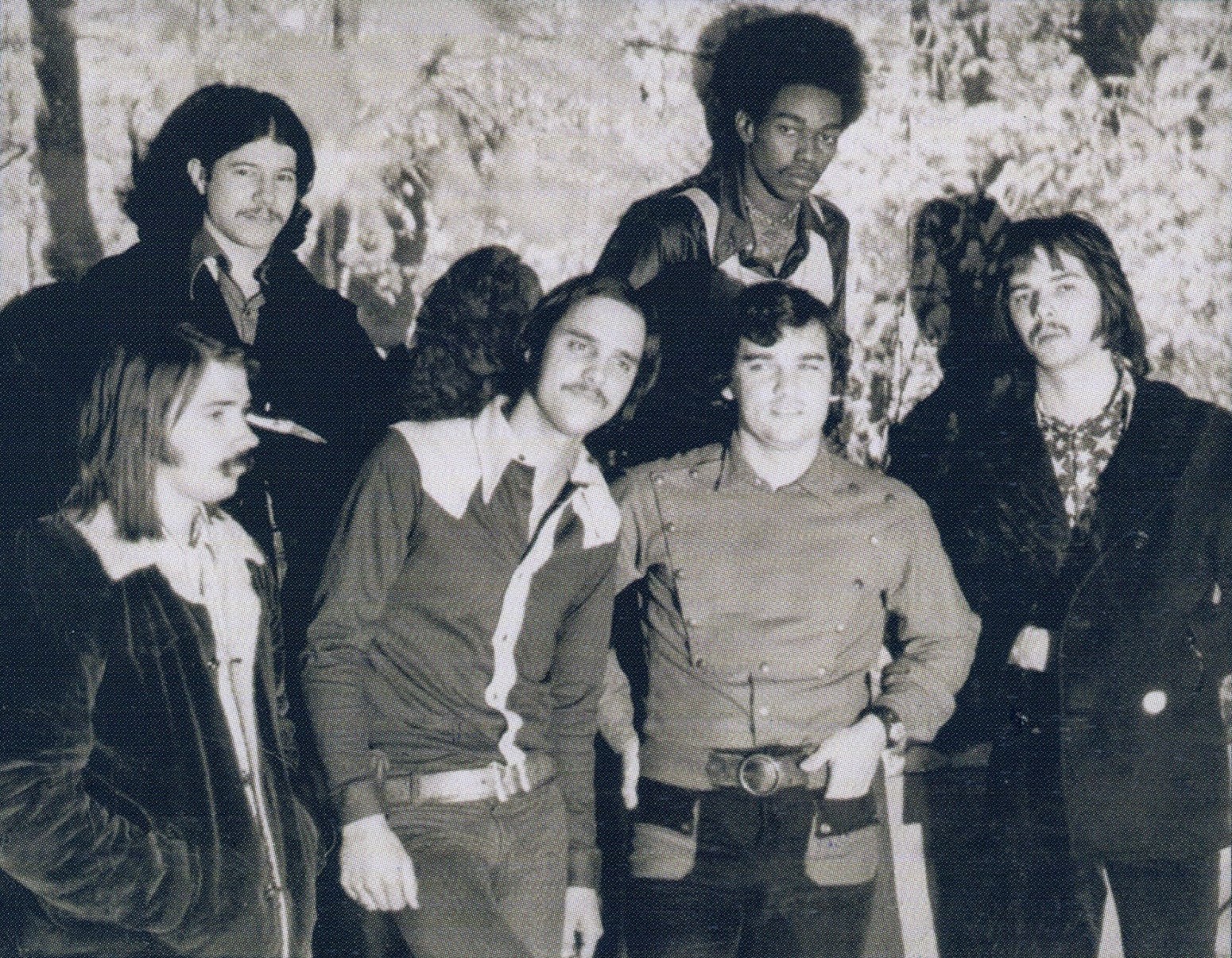
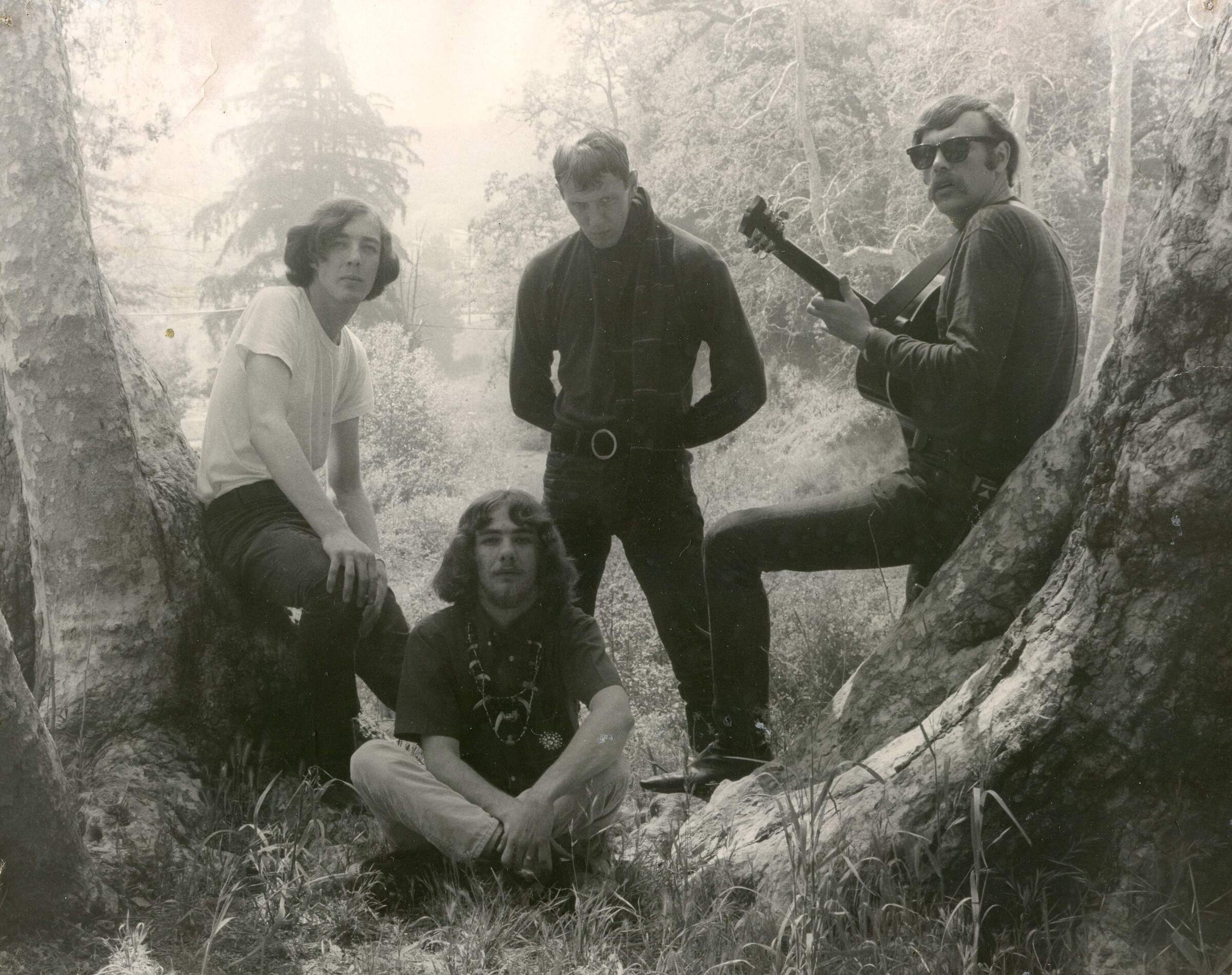
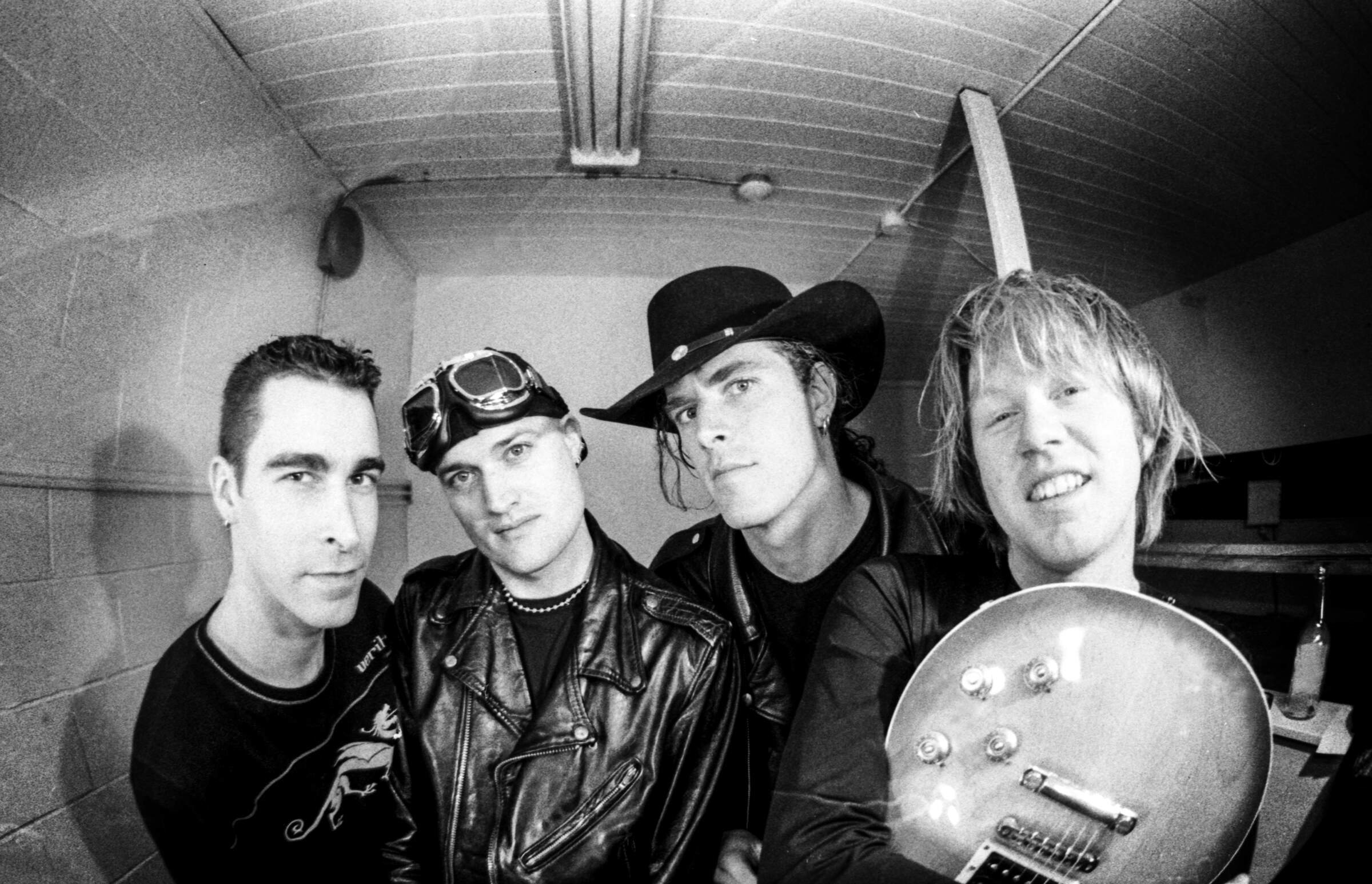
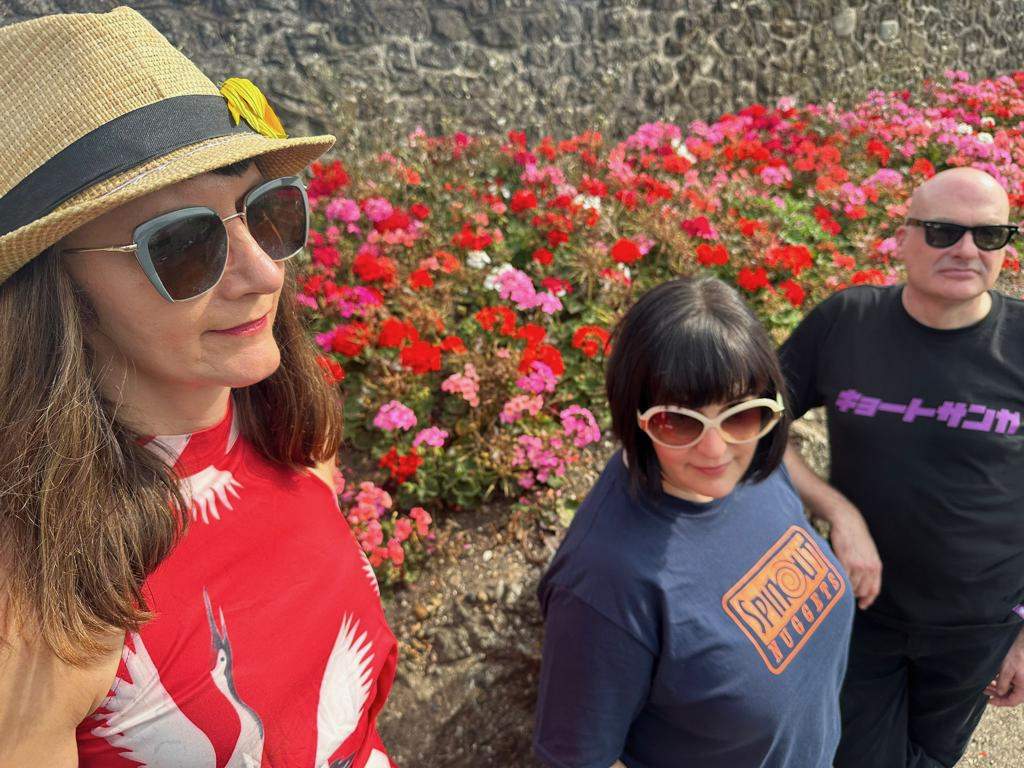
Great interview! Thanks for sharing with us! Regards, Marcos from Brazil (an Ultra fanatic fan!) 🙂
Great Blog Man! Check Out http://themetallodge.blogspot.com and lets exchange banners/links! Cheers!
It was great reading your article. Lots of memories. I am Cleve who founded Budget Tapes & Records and Warehouse Records in Houston in 1970.
A little late leaving a comment here, just found the blog. Saw Homer once at Teen Canteen on Bitters Road in S.A, must have been 1971 or 72. Lost all memory of them until a few years ago I heard Dawson Creek and went looking for the album. That led me to The Outcasts and Ultra… great stuff guys, I still listen!
Really enjoyed reading this history!
My Self Garry Dworaczyk and Jimmy Garrett both were students under Galen Niles at Del View Music the first song he taught me was Rush Bastille Days then went right to Kiss being a big Ace Frehley fan, still am, what I remember most is how good Galen made you feel when you played with him,,he's say okay play this rhythm and he's plast the rest making you feel like you were making music. Thanks Galen for the time and effort still playing old Kiss on my Cherry Sunburst Les lol
Garry Dworaczyk
Student and Ultra Fan
Get To Hang With Pat Travers now lol
Boost Your Business by Hiring Accounting Firms in San Antonio TX, Uhlenbrock CPA is the best accounting firm in the san antonio tx Call (210) 701-1040
This takes me back in time to the early 1980’s when gaylen niles was my bass guitar instructor at don packs dellview music center in san antonio tx..he could really jam to anything and really impressed me and is very talented and was a high kicker in martial arts its been so long ago but if I remember correctly he was stricken with polio at some point in his life and at the time I was an usher working at a downtown movie house called the Aztec 3 and he would stop by to check out some karate flicks as I would let him in free..speaking of “ultra” I also remember buying an unfinished custom made bass guitar from scott stephens who at the time was a salesman I believe at a downtown music store by the name of Caldwell music this was a custom made bass that had gold plated hardware and a heavy fender claw bridge that Scott told me he got at a NAMM show and Scott used to drive a light blue convertible vw karmann ghia..man some of the best times you just don’t forget!!